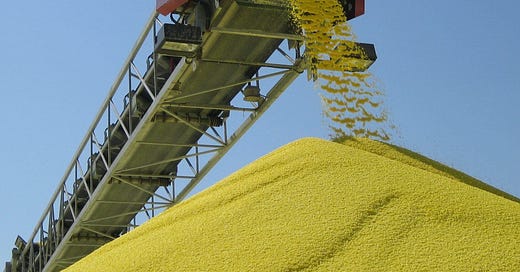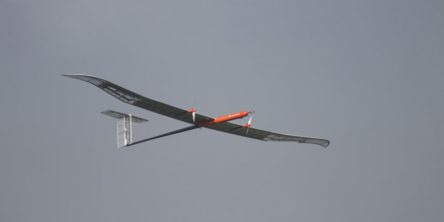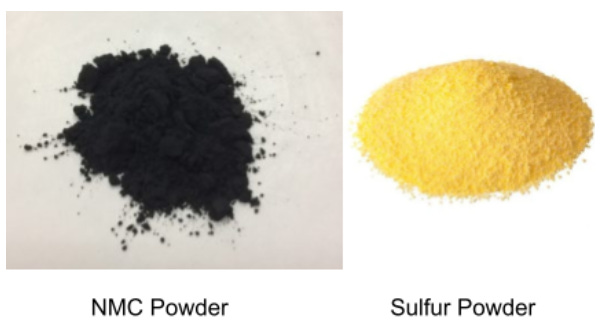A novel new battery concept is approaching a real possibility. The lithium sulfur battery was invented in 1962, and is finally starting to gain traction and potentially penetrate the lithium ion battery market. You might best know sulfur for its pungent rotten eggs smell, but don’t let that deter you!
One of the largest battery manufacturers, LG Chem, recently displayed that a lithium sulfur battery powered drone could fly at high altitude and low temperatures for seven hours. The Company more recently announced plans to commercialize Li-S batteries by 2025, which would be a substantial advancement given the complexity of Li-S chemistry.
Sulfur is Earth’s seventh most abundant element, and powder can be easily obtained as a byproduct from oil refining. The use of sulfur at the cathode is sustainable and also presents opportunities for batteries with higher energy density than traditional Li-ion.
Cathodes containing 70+ percent of sulfur can yield ~400Wh/kg of energy and would fit nicely into the roadmap of battery development. Unfortunately there is a reason why the leap to Li-S has not occurred yet. Li-S batteries present their own unique challenges, most notably short cycle life and high self-discharge rates. The lithium polysulfide “shuttle effect” is a large contributor to poor stability as the dissolution of polysulfide reaction intermediates into the electrolyte causes parasitic reactions and/or limits Li ion mobility.
Let’s dive deeper into the cell and understand what researchers are doing to improve cell performance.
Li-S Battery
A sulfur cathode is made by mixing sulfur with conductive carbon and a binding agent. Paired with a lithium anode, lithium sulfur batteries work by the following reaction 2Li + S ↔ Li2S generating a discharge voltage of 2.15V (lower than than of traditional Li-ion). Under electric load the cell discharge/charge profile can be described in four separate phases (Fig 1).
In region one (I), the solid to liquid phase reduction from sulfur to Li2S8 (polysulfide) occurs at the 1st upper voltage plateau of 2.2-2.3V. At this stage Li2S8 dissolves into the liquid electrolyte essentially becoming a “liquid cathode”.
In region two (II) of cell discharge a liquid-liquid reduction from Li2S8 to lower order polysulfide occurs. Cell voltage is gradually declining and electrolyte is thickening as the concentration of polysulfides increases. The electrolyte viscosity reaches a maximum in the end around 2.0V.
In region three (III), the lower order polysulfides undergo a liquid to solid phase reduction to insoluble Li2S2 or Li2S (lithium sulfide). This region forms the long voltage plateau at 1.9-2.1V and contributes the majority of the capacity for the Li-S cell.
Finally in region four (IV), any remaining Li2S2 will undergo further solid to solid reduction to Li2S.
The complete reduction from sulfur to Li2S has a theoretical energy density of 2600 Wh/kg which is about 3-5 times higher than traditional Li-ion. It is clear why this chemistry has potential implications. Researchers specifically focus on the critical regions (I and II), because this is where polysulfide shuttling is most prevalent.
Mitigating Shuttle Effect
The primary challenge and reason for the low cycle life of Li-S batteries is due to the shuttle effect or electrochemical reaction of polysulfide intermediates. This occurs when solid sulfur dissolves into organic electrolyte producing polysulfide species. The movement of sulfur into the electrolyte causes a thickening of the electrolyte and reduction of solid sulfur on the cathode. This significantly affects the longevity and energy of the battery as there is less elemental sulfur on the cathode. As the concentration of the polysulfide species in the electrolyte increases, lithium ion mobility decreases due to electrolyte viscosity increase.
There are a variety of strategies that have been tried to mechanically or chemically limit the polysulfide shuttle.
Choosing electrolyte with low polysulfide solubility
Polymeric functional binders
Conductive carbon type/geometry
Inorganic additives
Separator type or pore size
All of these have their own unique implications on the cell performance, but to date some of the best relatively high loading cells have only been reported to retain ~80% capacity after 100-200 cycles. Recently the research team under Jeff Dahn, whom is tied closely to the team at Tesla, announced a million mile battery (~3000 cycles) with traditional lithium ion batteries.
Cause for Concern
Recently we found out that Oxis Energy, a leader in Li-S battery development, is facing bankruptcy because it could not “raise the investment to continue its product development”. Last year Oxis had announced that it had tested its 471 Wh/kg Li-S cell prototype, and more recently in April 2021 that it would supply the Bye Aerospace eFlyer 800 with 550 Wh/kg cells. Sadly, something must have gone terribly wrong. On May 28th, bids were opened to the public for its specialized equipment and ~200 patent portfolio.
The bankruptcy filing of Oxis is significant, because as mentioned LG Chem made a statement that they intend to commercialize Li-S in the middle of the decade. One would have expected that this would give credence to Oxis’ technology, so the fact that they could not receive funding is surprising. Oxis’ liquidation involves selling some of its patents, and industry insiders would wonder whether large battery manufacturers would make a bid for some of them. LG Chem could be a potential suitor given their recent statement.
Conclusions and Practical Considerations for Future Development
The Li-S battery has been receiving attention for its potential in enabling Li-ion batteries to breach the 300 Wh/kg threshold. The Oxis Energy announcement is startling, but experts consider the Li-S technology to have potential, because the cathode formulation process uses existing mixing equipment that is used for traditional active material chemistries such as LCO, NMC, and LFP.
Researchers are working on a variety of different strategies to improve cycle life of Li-S batteries. Sulfur has unique physical properties that force it to be used differently than traditional materials. According to "How Far Away are Lithium-Sulfur Batteries From Commercialization" the authors suggest practical recommendations. It seems the goal for Li-S pouch cells is to use >75% of sulfur and strategically think about conductive agents and binders used in formulation. Electrolyte choice and/or metal additives could further enhance cell performance.
Keep an eye on this technology as it is moving in parallel with pure solid state batteries. Both are targeting the 400-500 Wh/kg energy density level.
References:
Li2S Battery Chemistry Company - https://oxisenergy.com/
How Far Away are Lithium-Sulfur Batteries from Commercialization. Frontiers in Energy Research. 2019.
“Liquid electrolyte lithium/sulfur battery: Fundamental chemistry, problems, and solutions”. Sheng S. Zhang. January 2013.
https://electrek.co/2021/02/24/breakthrough-lithium-sulfur-batteries/











